- Virachey is Cambodia’s largest national park, with 3,325 square kilometers of mountainous jungle, upland savannas, and deep river gorges spanning across Stung Treng and Ratanakiri provinces in the extreme northeast of the country.
- Economic Land Concessions, some of which have now been revoked, chipped away at the area of the park that borders Vietnam, while selective illegal logging takes place throughout Virachey (and every “protected area” in Cambodia) and poaching is rife.
- This post is a commentary. The views expressed are those of the author, not necessarily Mongabay.
It was getting late in the day and we were searching for our favorite swimming hole and camp site, a place called D’dar Poom Chop (which translates roughly from the ethnic Brao language into something like “Broken Pineapple Rock Waterfall”) in Cambodia’s Virachey National Park.
In fact, we didn’t intend to set up camp there, as it’s not directly on the old Brao path we needed to take in order to reach the Lao border — a path that was used in times past to evade paying taxes, escape forced labor for the French, and flee the Khmer Rouge. That same path became a main artery of the Ho Chih Minh Trail used by the Viet Cong, and then during the Vietnamese occupation period trucks and elephants used the trail to haul out valuable timber and rattan. Today it is used mainly by poachers, loggers, and a ragged conservation team consisting of myself, Virachey Park staff, and Brao porters. We were on our way to retrieve footage from our camera traps in the park, and were hoping to take a quick swim en route.
Virachey is Cambodia’s largest national park, with 3,325 square kilometers (close to 1,300 square miles) of mountainous jungle, upland savannas, and deep river gorges spanning across Stung Treng and Ratanakiri provinces in the extreme northeast of the country. Economic Land Concessions, some of which have now been revoked, chipped away at the area of the park that borders Vietnam, while selective illegal logging takes place throughout Virachey (and every “protected area” in Cambodia) and poaching is rife. However, there have been whispers of much more sinister plans: a “border belt” road that would hug the Lao border inside Virachey in the area that is currently the most inaccessible and lush of the whole park — the very area where our twelve camera traps were currently in operation. The effects that such a road would have on wildlife and the forest are unthinkable: farmers, squatters, more poachers, more loggers, industrial-scale plantations, and much more would probably follow.
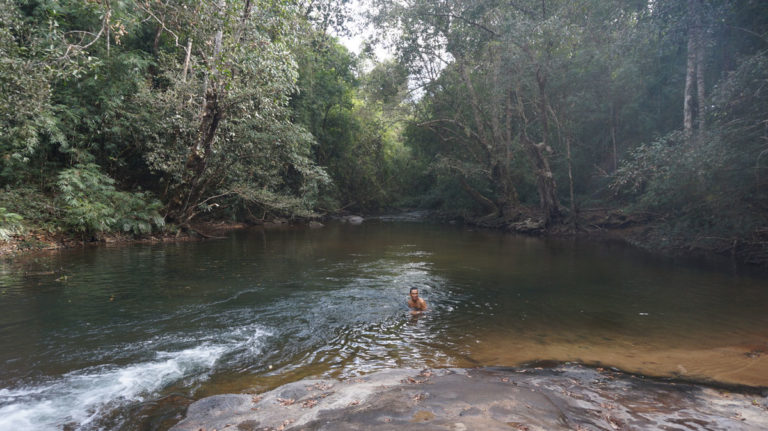
Heavy storms in 2016 leveled entire stands of bamboo, causing us to lose the way several times. With hordes of leeches on my legs and daylight fading fast, I voted to set up camp next to a stream that seemed to be flowing in the wrong direction. The next morning I was sure that the stream was the O Gan Yu River, which has its source in Phnom Haling-Halang (Phnom means hill or mountain in Khmer), the Cambodia-Lao border mountain where we had a dozen camera traps set up. I figured it would help us get our bearings if we could confirm that D’dar Poom Chop was just 20 minutes upriver, which was my guess. I asked our two lead guides, Virachey Ranger Leam Sou and “muscle man” Peen, to take a few minutes to investigate before we set off on another machete-whacking slog. We were now four days deep into the trek and we couldn’t afford to waste any more time with unnecessary detours.
The expedition was beginning to feel like a long walk in the Dagobah System from The Empire Strikes Back, with my old, shriveled and hunched-over Brao friend Kamla wandering off into the forest on mysterious quests while we waited for Sou and Peen. As I was beginning to note the leeches again, Sou and Peen came back shouting. “Greg! Elephant shit! We find elephant shit close to D’dar Poom Chop, and it’s only 200 meters away!” I was stunned by this news.
We got GPS handsets and cameras out and set off in pursuit of steaming piles of elephant dung. We found about a dozen, most of which appeared about three months old by our guides’ estimate. In 2015 we found some very old lumps of elephant dung near the Lao border mountains, and some ethnic Kavet guides insisted that only a small group of elephants remain, which occasionally cross over the border from Laos. We stood now a good distance from those border mountains. These could be genuine Virachey elephants, remnants of once-vast herds that were ruthlessly slaughtered in the 1980s. Who knows, maybe they had come all the way down to bathe in that paradisiacal swimming hole that I love so much.
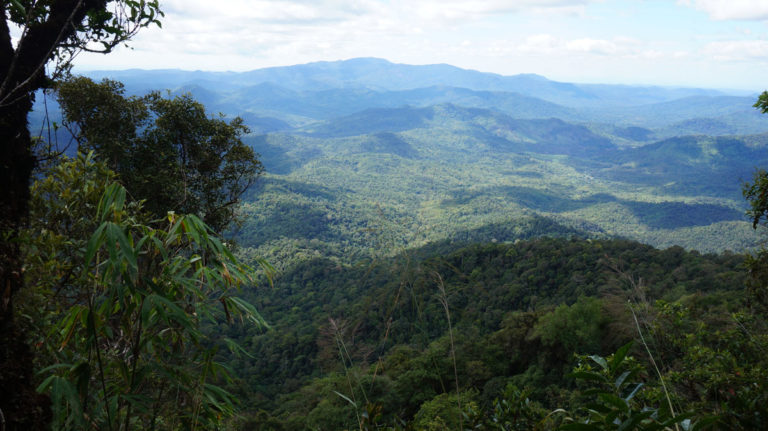
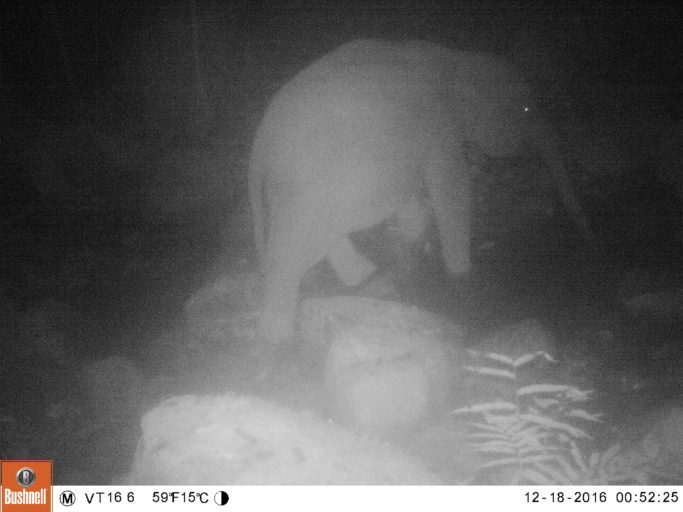
It was time to get moving again and reach Haling-Halang base camp. We stopped to pick up two camera traps en route, with swarms of ants racing frantically in and out of the protective metal casings and biting us as we fiddled with jammed and rusted locks.
We almost made it to the Lao border in a day — which would have been a feat to impress even the super-fit Brao tribal people — but we got lost once again, this time spending two hours over the international border in Laos’ contiguous Nam Ghong Provincial Protected Area, which still retains beautiful forest cover to this day. But I had a feeling there would be a reward in this. Since we wouldn’t be able to make base camp, we might be able to throw up our hammocks on the side of a large, open basaltic clearing that affords a majestic close-up view of Haling-Halang. And from there, with a rocky clearing up above a triple-canopy forest, we might be treated to a chorus of gibbon calls like none other. I was not mistaken.
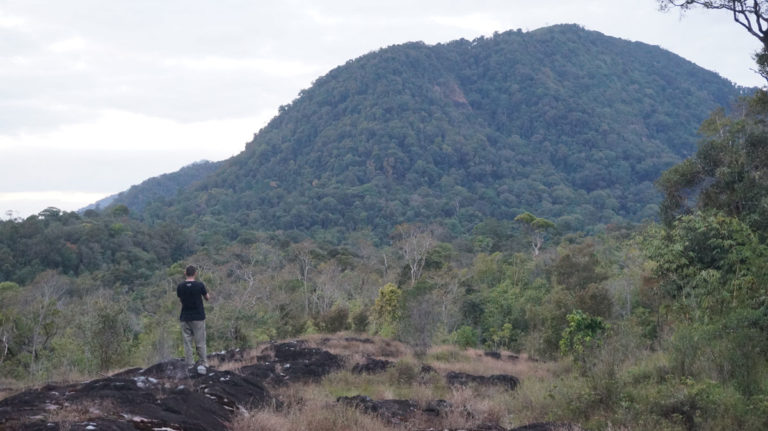
At about 7am the next morning I heard, from my frigid hammock, several dozen families of endangered Yellow-cheeked gibbons (Nomascus gabriellae) begin calling from every direction, their eerily beautiful voices traveling fast over the canopy and giving life to these tropical hills. It seemed like the maniacal cries would never end. They whooped and called until their voices trailed off into falsettos of ecstasy, finally ready to begin searching for food in one of Mainland Southeast Asia’s last primeval forests.
When they had stopped singing I got out of my hammock, took some coffee in a bamboo cup, and checked over some of the camera trap memory cards that we had collected the day before: a golden cat with cub, a family of gaur, a huge serow, a lone dhole, a sexy hog badger, a sun bear with a missing paw. Virachey National Park, despite years of conservation neglect, was still brimming with wildlife.
After a breakfast of instant noodles — something my Irish trekking partner equated to consuming a sheet of paper in terms of nutrition — we set off for Haling-Halang base camp. The late naturalist Ivan T. Sanderson, in his Book of Great Jungles (1965), wrote that the difference between a degraded forest and a primordial or climax forest was so extreme that “you pass from one world to another.” This was where the gibbons were, and where Great hornbills swooshed overhead and growled their way onto their aeries. Huge, gnarled trees, some already killed by strangler figs and fallen over, only to be caught by others dying the same deaths; massive column-like trunks with chipping bark that we’d need botanists to come in and identify; sparse undergrowth — old growth forest at last! The land of gibbons and hornbills and otters, and, as we’d soon find out, elephants!
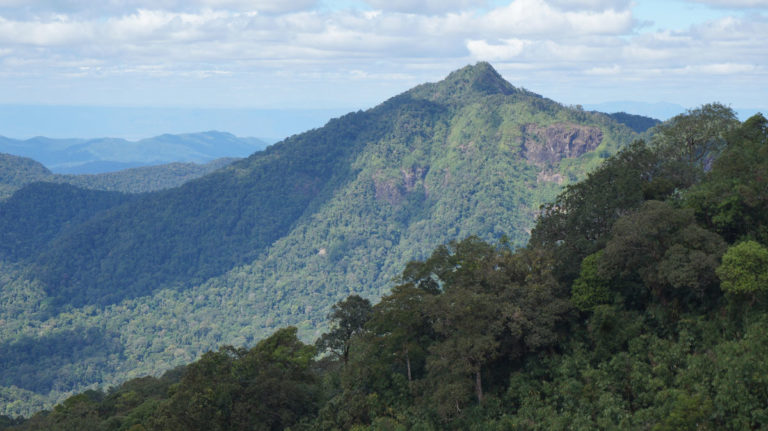
We had time to collect two camera traps before dark, and the first one produced gold: Asian black bear, sun bear, Asian small-clawed otter, gaur, leopard cat, binturong… and a family of about a dozen Asian elephants (Elephas maximus). I shouted with joy, and the locals were happy as well. In fact, they were afraid that elephants and most other large mammals had long been poached out of the Park. Our camera traps proved that this was not the case.
The next day we summitted Haling-Halang, getting lost once again and scaling nearly inverted cliffs, but up there our camera traps revealed spotted linsang (a rare record for Cambodia), clouded leopard, marbled cat, golden cat, large Indian civet, and many other species — including poachers.
It was dark by the time we reached camp and a frog hunt commenced to supplement our dwindling food stores. I declined to take part because I just had to flip through all those memory cards again. On the last day in the Haling-Halang base camp area we headed east in the direction of Vietnam where two more cameras needed to be collected. More elephants on one, as well as black bear, golden cat, and the now near-locally extinct Sunda pangolin (Manis javanica). And, unfortunately, a group of Vietnamese poachers, one staring menacingly into our camera with his rifle in hand. We had missed them by just four days.
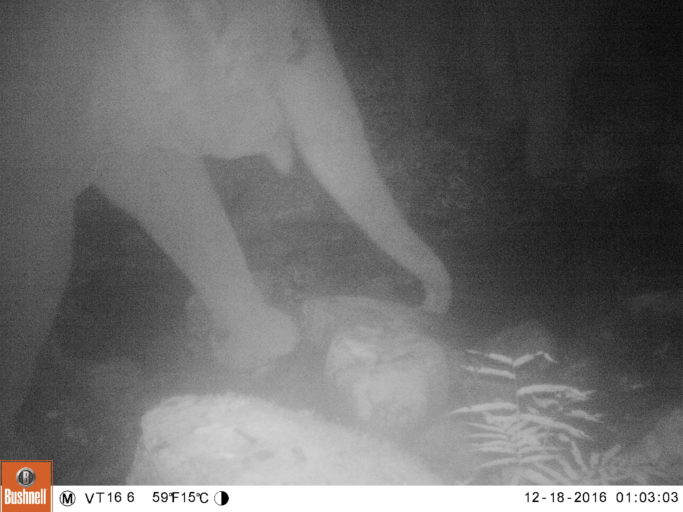
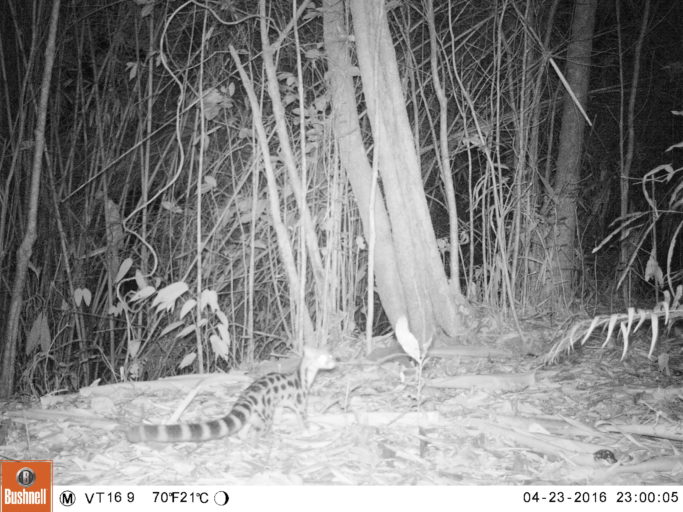
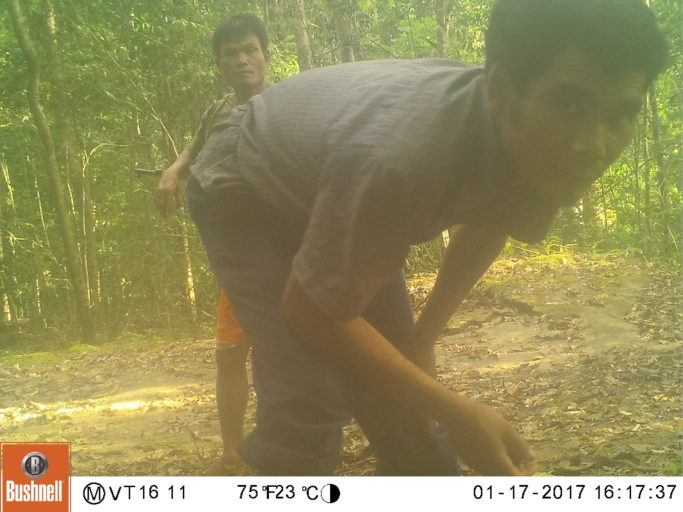
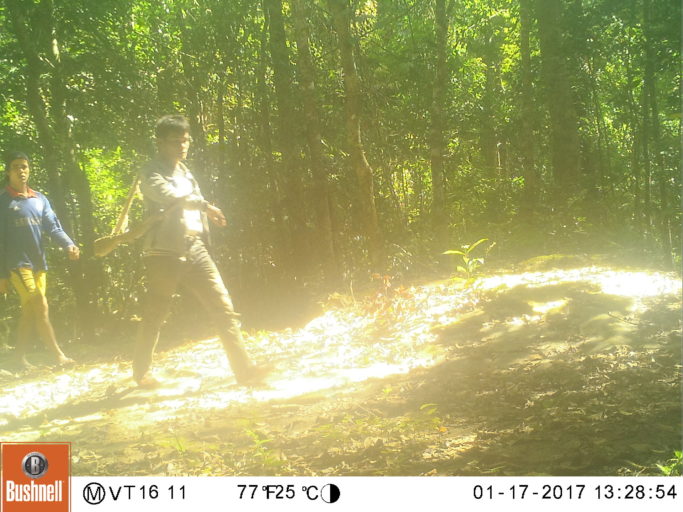
With all twelve camera traps collected, we began the long trek back to the Brao village beside the Sesan River, which is one of the main tributaries to the Mekong River in Cambodia and which is also being controversially dammed downstream in Stung Treng province. We made it back in record time and homemade rice wine awaited us. Our three-year wildlife survey was now complete, but that did not set my mind at ease.
Virachey has been left to its fate: Roads, dams, poachers, loggers, miners — the Age of the Anthropocene. But if there was one place in the region worth fighting for, this is it, and the elephants prove it. However, many conservation NGOs, even the big ones, face financial difficulties today, and Virachey has somewhat of a bad reputation. Help, it seems, won’t be coming anytime soon.
Can I end this on a positive note? First, Virachey still has lots of wildlife. Second, many of the armed criminals photographed on our camera traps are actually looking for kumla wood from which they can make drugs and other valuable substances, although they will opportunistically shoot gibbons and douc langurs out of the trees to supplement their diets (kind of like how we caught the frogs, although our amphibians are not threatened with extinction). But no doubt, if they came across the elephants, they might go for them.
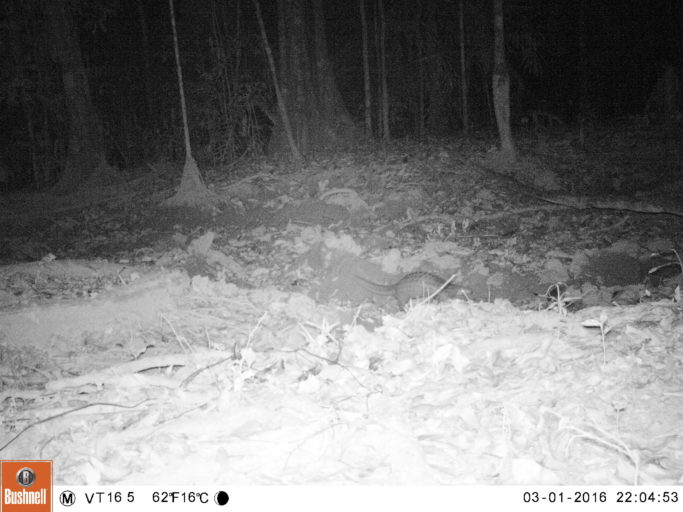
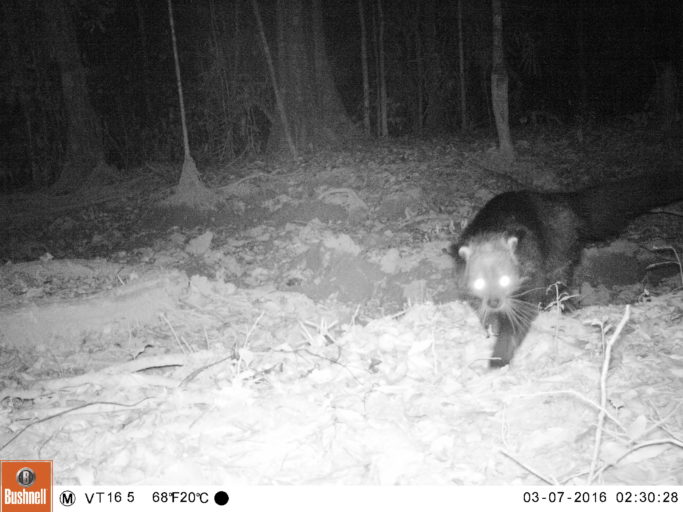
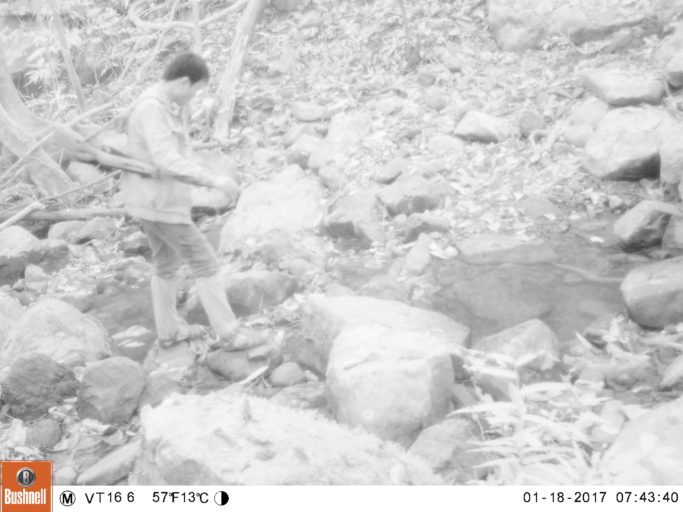
Third, I doubt they’ll ever finish the “master plan” for the border-hugging road as they now envision it. Fourth, although a wretched Chinese dam might go up inside Virachey, dams are not always bad. In 2014 we visited Thailand’s Khlong Saeng Wildlife Sanctuary — an area flooded long ago by the Ratchaprapha Dam — and conducted a six-month camera trap survey that turned up Malayan tapir, Asian elephant, banded linsang, clouded leopard, golden cat, and many other species that seemed to have no problem with the reservoir. So long as there is no access road and boat access is strictly for revenue-generating ecotourists, then that section of the park may not be utterly doomed.
And lastly, several other “protected” areas abut Virachey, including Nam Ghong PPA in Laos to the north, the brand new Veun Sai-Siem Pang National Park to the south, and Chu Mom Ray National Park in Vietnam to the east. The actual forested area, including Virachey, is probably close to 500,000 hectares. That’s not something you give up on, especially when elephants are still pounding around, dholes are still yelping, and clouded leopards continue to stalk gibbons, langurs, and macaques. Virachey is as important as any other protected area in Southeast Asia.
If we lose Virachey we lose the last great piece of the Annamite Mountains. According to researchers I have spoken with, vast expanses of the Annamite Cordillera in Vietnam have been defaunated, with the majority of ground-dwelling mammals wiped out by indiscriminate snaring. The situation is not much better on the Lao side of the Annamites, as William deBuys’ exquisite book The Last Unicorn (2015) shows us. This is not the case in Virachey — yet.
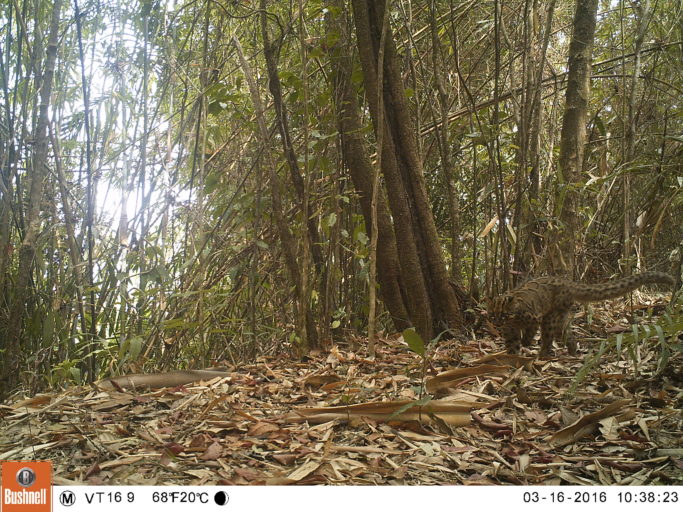
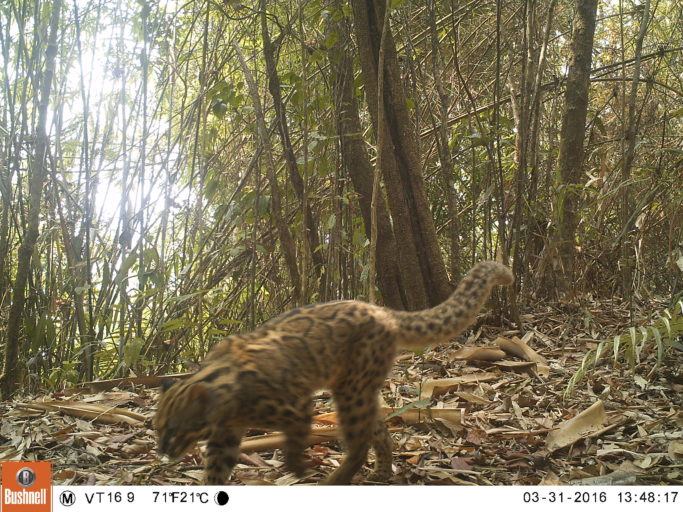
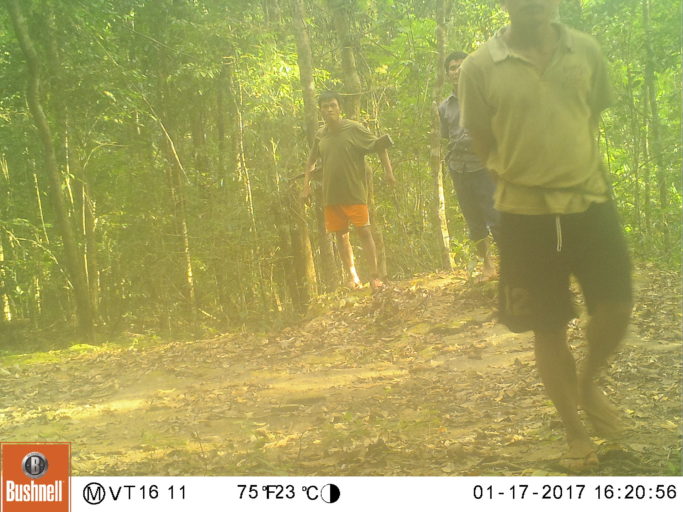
Virachey’s fate is largely beyond the public’s control. Visit it as soon as you can, because you never know: maybe you’ll have to wait for a baby elephant to leave the D’dar Poom Chop swimming hole before you can plunge in, and there will be gibbons and hornbills galore, for sure, for now. I often feel that we live in a “see it before it’s gone” time regarding the last wild places of Southeast Asia. And maybe that’s the truth. Will confirming the existence of Asian elephants in Virachey make any difference? It hasn’t yet, and poachers appear in the same cameras that the elephants do. If I’ve seen those piles of elephant dung, then the poachers have too. Virachey has already lost its tigers and common leopards (Panthera pardus), and just how many elephants remain is uncertain. What did three years of camera-trapping — sponsored by Habitat ID and generous individual donors — accomplish? It’s probably too soon to tell.
But some things stick in my mind. We were told that in the 1980s, poachers were killing up to a dozen elephants a week in what is now Virachey National Park. By 1990 that number dropped to about two per week, and some felt it wasn’t worth the effort anymore. The area was declared a national park in 1993. A longtime expat conservationist in Cambodia who corroborated that information also told me another sad tale from nearby Preah Vihear province: A local hunter told him that in the early 1990s a herd of elephants had come down out of the mountains and a local man who happened to have an AK-47 slung on his shoulder whipped it around and opened fired on the herd. One of the elephants went down, and moments later two from the herd went back and, using their bodies, lifted it back up and helped it back into forest cover. The herd had disappeared into the forest by the time the shooter could reload.
I think of this last elephant herd in Virachey. Will they die in silence, poached out by the men you see in this article, or can a couple of patrols catch these criminals and put them behind bars?
In the end, as far as the amazing biodiversity in deep Virachey goes, it seems, so far as our camera traps can show us, that wildlife remains, but one or two bands of horrid poachers/loggers operate in our study area, and with impunity. It wouldn’t cost that much to fund a patrol to go in and catch them and bring them to court.
I already mentioned that we have wrapped up our project and the survey has come to a close. And I’ve told many people that this was my last trip to Cambodia. But I’ve said that before. The elephants sort of change things.
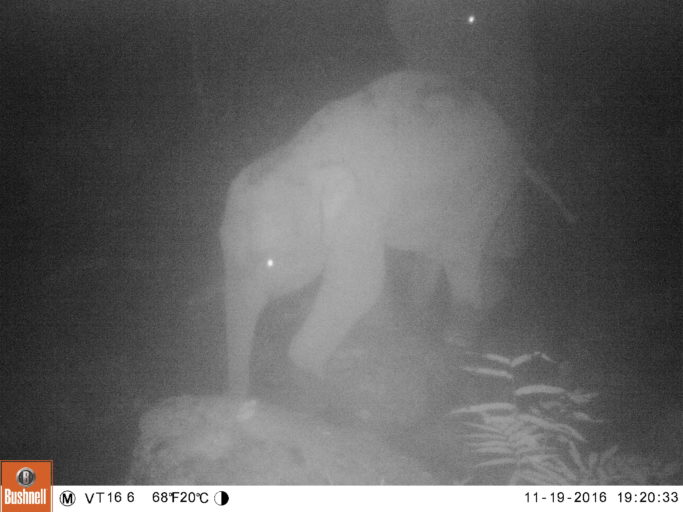
Gregory McCann is the Project Coordinator for Habitat ID and the author of the book Called Away by a Mountain Spirit.